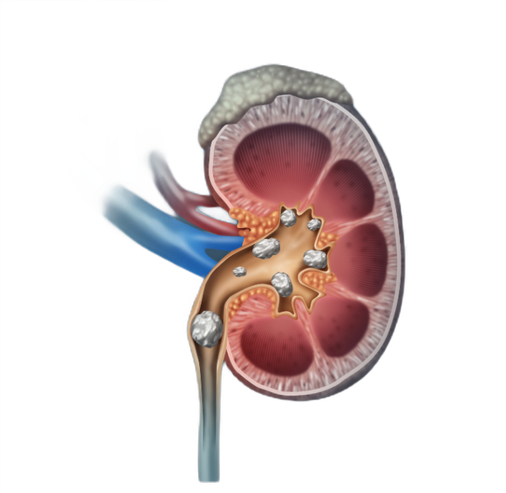What are the different kidney stone removal surgeries?
Retrograde Intrarenal Surgery (RIRS) – RIRS is an advanced procedure to treat kidney stones with sizes between 8mm to 15mm. It is a non-invasive procedure where the patient is administered with spinal or general anesthesia before the surgery for a painless experience. The surgeon inserts a thin, flexible scope that is attached to a camera and a laser on the other end. The stones are then subsequently broken into smaller fragments and expelled through urine. The surgeon may choose to insert ureteral stents before the RIRS surgery. Stents enlarge the passage of the urinary tract for smooth movement of stones.
Ureteroscopic lithotripsy (URSL) – Ureteroscopic lithotripsy uses a thin scope to locate and remove the stone. URSL is an effective surgical option for moderately sized kidney stones. The patient is administered with local or general anesthesia for a painless procedure. The urologists may insert ureteral stents to ease the movement of stones during the expulsion.
Extracorporeal Shock Wave Lithotripsy (ESWL) – It is a non-invasive surgery that uses external shockwaves to break the stones into smaller pieces. It is usually recommended for kidney stones with sizes between 6mm to 8mm. ESWL is a conventional procedure that may require multiple sittings to break the stones completely.
Percutaneous Nephrolithotomy/Nephrolithotripsy (PCNL) – PCNL is an advanced procedure to treat kidney stones of size greater than 14mm. It is also known as minimally invasive surgery due to the nature of small incisions in the flank area. The patient is under general anesthesia throughout the procedure for a painless experience. The surgeon then uses a nephroscope to locate and remove the stone. If the stone is removed in its intact form, it is called nephrolithotomy, and if the stone is broken into smaller pieces, it is termed nephrolithotripsy.
How can I prepare for kidney stone surgery?
- Inform your urologist about any ongoing medications and health conditions before surgery.
- You must also let your doctor know about any allergies related to anesthesia.
- Do not smoke tobacco or anything else before your kidney stones surgery.
- Consult the doctor before taking any blood thinners and other medications prior to the surgery.
- Refrain from eating or drinking anything 9 hours prior to the surgery.
- Do not wear tight clothes. Prefer wearing loose clothing to avoid hurting the surgical site.
- Avoid weaning any talcum powder or deodorant.
- The doctor may also insert stents in your ureter via the urethra, which may be kept there for two to three weeks to dilate or enlarge the ureter and make stone removal easier.
Ureteral stents and what you need to know about them?
Ureteral stents are thin, flexible tubes about 10-12 inches long. They are J shaped soft tubes that are placed in the kidneys with another end in the bladder. The stents hold the ureteral opening and maintain drainage of urine. It is a temporary measure used to allow small stones to get easily flushed out of the system. Stents may cause some mild symptoms that are temporary. Some of the symptoms include bladder irritation, uncomfortable sensation while urinating, blood during urination, etc.
The doctors generally suggest avoiding any strenuous activity during this period as it can displace the stent in the ureter causing major complications. The amount of blood loss is rarely significant and can resolve within 24 to 48 hours. The urologist may remove the stent within a few days to a few weeks after the surgery.


